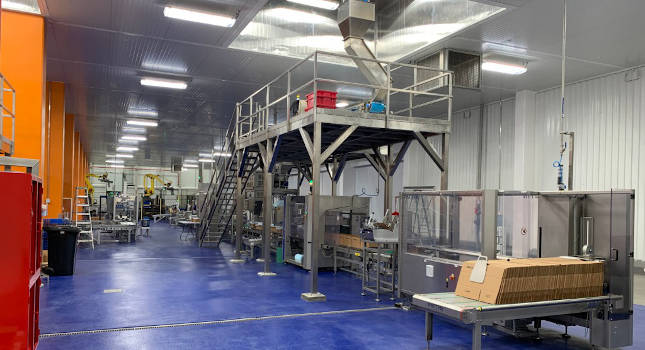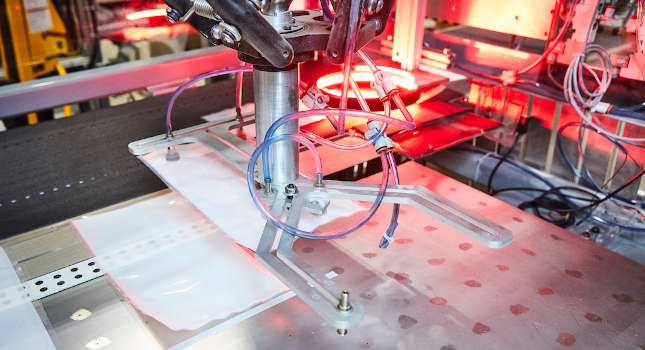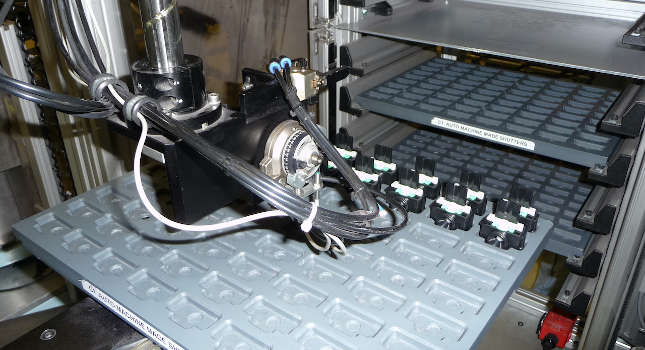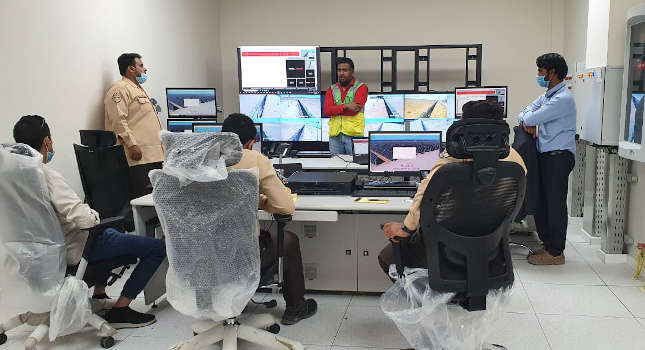Robot palletizer safely packs fresh eggs, increases throughput and reduces costs

Egg packing and palletizing systems for a large egg supplier installed at two of their sites have proved themselves by running smoothly and improving operations. The customer is a long-standing major eggs supplier to many of UK’s leading supermarkets. CKF was commissioned to automate the customer’s packing to reduce the number of damaged eggs, increase throughput and reduce the amount of manual handling involved.
Packing fragile products
The new system was installed into the customer’s existing Moba outfeed egg-packing system, which fills cartons of various sizes and materials and closes the lids. This fed the eggs to a manual packing station. The new system feeds the filled and closed cartons onto the outfeed conveyor, the setup of which is determined by the current production requirements.
The solution includes a vision system that verifies that the use-by date has been included and the lid is closed. If the lid is not closed or the date is incorrect or missing, the product is rejected and sent to the reject conveyor for removal. Automating this process means faulty product is removed swiftly from the line, preventing it from reaching the customer and ensuring quality product.
If the product passes the test, the egg carton is transferred onto the collation infeed conveyor unit, which transfers and orients the product correctly, ready to be conveyed to the box splitter unit. Where two packs of six egg cartons are joined and need to be split, the box splitter unit is used to split the cartons using a blade without damaging the eggs. The box splitter can cut both pulp and plastic cartons. The solution has a product spacing unit that uses pneumatic stop gates to ensure there is a set amount of space between the cartons of eggs or group of egg cartons to allow for pack orientation or for repositioning into the correct lane.
“We encountered a number of issues through the planning and implementation of this project due to the variety in packaging materials,” said Chris Young, project engineer, CKF Systems. “Different materials behave differently on the conveyors, the system being able to handle different materials was absolutely vital, so we used a combination of belt materials and surface textures to overcome this issue.”
Palletizing egg cartons
A low back-pressure chain roller conveyor moves the egg cartons through to the robot sorting collation conveyor. The sorting modular belt conveyor encoder is used to track the cartons positions, enabling the sorting robot to reposition the packs and thus creating the required collation. The system uses an ABB IRB1200 sorting robot system, which is programmed to arrange the egg cartons into specific patterns on the sorting modular belt conveyors as required by the packing robot. The type of carton and the type of container the cartons are being packed into determine the collation pattern the cartons are placed in by the sorting robot.
Once the cartons are positioned on the sorting modular belt conveyors, they are transported onto the collation conveyor unit. The cartons will be correctly oriented by the sorting robot. If the carton spacing isn’t what’s required by the packing robot, a collation servo unit uses pneumatic stops to ensure the correct number of cartons with the right spacing is fed onto the conveyor ready to be picked by the packing robot. There are two available product streams providing versatility in the pattern available for the packing robot. The type of carton and the type of container the cartons are being packed into determine the number and pattern of the cartons.
Ensuring the nation has fresh eggs
Once the egg cartons are grouped in the required pattern, the robot picks the group of egg cartons from either stream and places them into the selected container for that specific production run. In the case of shipper/bulker containers, they are then removed by a forklift so they can be transported to the supermarket, ensuring customers have access to fresh eggs. Alternatively, if cardboard display cases are being packed, once full, they are automatically discharged from the robot cell via a conveyor system and transferred for palletizing.



